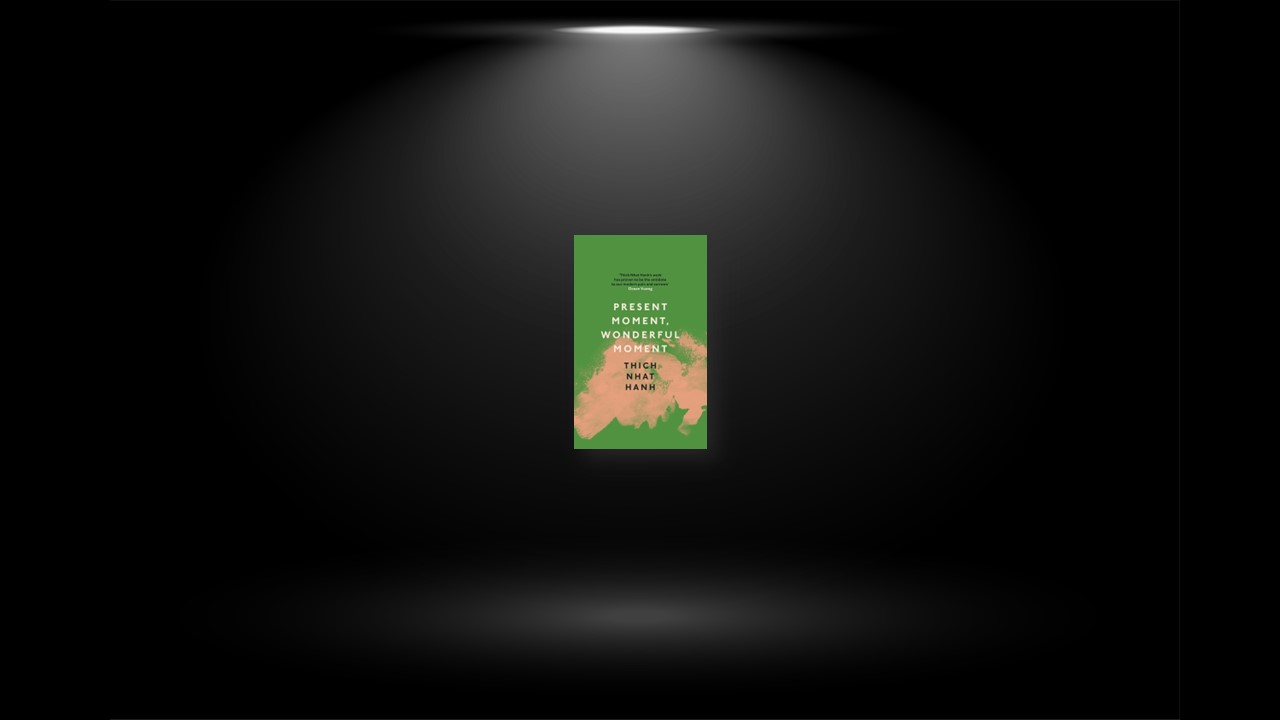Waking Up
WHAT BETTER WAY to start the day than with a smile? Your smile affirms your awareness and determination to live in peace and joy. How many days slip by in forgetfulness? What are you doing with your life? Look deeply, and smile. The source of a true smile is an awakened mind.
How can you remember to smile when you wake up? You might hang a reminder—such as a branch, a leaf, a painting, or some inspiring words—in your window or from the ceiling above your bed. Once you develop the practice of smiling, you may not need a sign. You will smile as soon as you hear a bird sing or see the sunlight stream through the window and this will help you approach the day with more gentleness and understanding.
Taking the First Step of the Day
THIS POEM can be recited right as we get out of bed and our feet touch the floor. It can also be used during walking meditation or any time we stand up and walk.
Dharmakaya literally means the “body” (kaya) of the Buddha’s teachings (Dharma), the way of understanding and love. It also is the ground of being manifested as mountains, rivers, stars, moon, and all species. Before passing away, the Buddha told his disciples, “Only my physical body will pass away. My Dharma body will remain with you forever.” In Zen, the word has come to mean “the essence of all that exists.” All phenomena—the song of a bird, the warm rays of the sun, a cup of hot tea—are manifestations of the Dharmakaya. We, too, are of the same nature as these wonders of the universe.
Walking on the Earth is a miracle! We do not have to walk in space or on water to experience a miracle. The real miracle is to be awake in the present moment. Walking on the green Earth, we realize the wonder of being alive. When we make steps like this, the sun of the Dharmakaya will shine.
Opening the Window
AFTER YOU WAKE UP, you probably open the curtains and look outside. You may even like to open the window and feel the cool morning air with the dew still on the grass. But is what you see really “outside?” In fact, it is your own mind. As the sun sends its rays through the window, you are not just yourself. You are also the beautiful view from your window. You are all that exists; you are the Dharmakaya.
When we open the window and look out, we see that life is infinitely marvelous. At that very moment, we can vow to be awake all day long, realizing joy, peace, freedom, and harmony throughout our lives. When we do this, our mind becomes clear like a calm river.
Following the Breath
IN OUR very busy society, it is a great fortune to be able to breathe consciously from time to time. Our body and mind become calm and concentrated, bringing us joy, peace, and ease. We can breathe consciously while sitting in meditation or anytime throughout the day. When we are aware of our breathing, we can recite this gatha.
“Breathing in, I calm my body.” This line is like drinking a glass of cold water. You feel the cool freshness permeating your body. When I breathe in and recite this line, I actually feel the breathing calming my body and mind. “Breathing out, I smile.” A smile can relax hundreds of muscles in your face and make you master of yourself. That is why the Buddhas and bodhisattvas are always smiling.
Letting Go
EVERY DAY there are ways in which we get caught in attachments, and so we continue to suffer. If only we could learn the art of releasing, happiness would come right away. Our worries and concerns prevent us from getting in touch with the wonders of life. We have all had the experience of being reminded of what is most important to us. Sometimes we are reminded by a friend or a teacher. Sometimes it may be the sound of the bell, bringing us back to ourselves in the present moment, enabling us to see the situation more clearly. Then we can let go of our worry, craving, or concern, so we can be free to encounter the wonders of life that are always there in the here and the now.
Serving Food
THIS VERSE helps us see the principle of dependent co-arising, as we see that our life and the lives of all species are interrelated. Eating is a very deep practice. As you wait to serve yourself or be served, look at the food and smile to it. Each morsel of food is an ambassador from the cosmos. It contains sunshine, clouds, the sky, the earth, the farmer, everything. Each morsel of food is a piece of bread offered to you by the Buddha.
Look into the bread, the carrot, and touch it deeply. When you are eating your meal, pick up one piece of carrot, and don’t put it into your mouth right away. Look at it and smile to it, and if you are mindful you will see deeply into the piece of carrot; sunshine is inside, a cloud is inside, the great Earth is inside, a lot of love, and a lot of hard work is inside. When you have seen clearly the real piece of carrot, put it into your mouth and chew it in mindfulness. Please be sure to chew only carrots, and not your projects or your worries. Enjoy chewing your carrot. The piece of carrot is a miracle. You, also, are a miracle. So spend time with your food; every minute of your meal should be happy. Not many people have the time and the opportunity to sit down and enjoy a meal like that. We are very fortunate.
Touching the Earth
THE EARTH is our mother. All life arises from her and is nourished by her. Each of us is a child of the Earth and, at some time, the Earth will take us back to her again. In fact, we are continuously coming to life and returning to the bosom of the Earth. We who practice meditation should be able to see birth and death in every breath.
Touching the earth, letting your fingers feel the soil, and gardening are wonderful, restorative activities. If you live in a city, you may not have many opportunities to hoe the earth, plant vegetables, or take care of flowers. But you can still find and appreciate a small patch of grass or earth and care for it. Being in touch with Mother Earth is a wonderful way to preserve your mental health.
Turning on the Computer
SOMETIMES, when we are on the computer, it is as if we have turned off our mind and are absorbed into the computer for hours. Mind is consciousness. The two aspects of consciousness, subject and object, depend on each other in order to exist. When our mind is conscious of something, we are that thing. When we contemplate a snow-covered mountain, we are that mountain. When we watch a noisy film, we are that noisy film. And when we turn on the blue light of the computer, we become that computer.
When using the computer we practice mindfulness. Before turning the computer on, recite the gatha. It’s possible to program your computer to make the sound of the bell every fifteen minutes so you can stop, breathe, smile, bring body and mind together, and release any tension in your shoulders or hands. If you are working for a longer period, you may want to get up occasionally and take some steps around the room to refresh yourself and help your circulation. Always type and read in a relaxed way, taking breaks to look out the window to rest your eyes.
Driving the Car
When we see a red light or a stop sign, we can smile at it and thank it, because it is a bodhisattva helping us return to the present moment. The red light is a bell of mindfulness. We may have thought of it as an enemy, preventing us from achieving our goal. But now we know the red light is our friend, helping us resist rushing and calling us to return to the present moment where we can meet with life, joy, and peace. Even if you are not the driver, you can help everyone in the car if you breathe and smile.
The next time you are caught in traffic, don’t fight. It is useless to fight. If you sit back and smile to yourself, you will enjoy the present moment and make everyone in the car happy. The Buddha is there, because the Buddha can always be found in the present moment. Practicing meditation is to return to the present moment in order to encounter the flower, the blue sky, the child, the brilliant red light.
Ending the Day
WE CAN practice beginning anew at any moment of our lives. To be born is to begin anew. When you are three years old you can begin anew, when you are sixty years old you can begin anew, and when you are about to die, that is still a time to begin anew. When we look deeply, we see that beginning anew is possible at any time of our daily lives, at any age.
As humans, we make mistakes. Without these mistakes, there would be no way to learn to be more accepting and compassionate. We should not get caught in the prison of guilt. If we can learn from our mistakes, then we have already begun transforming garbage into flowers. It is always possible for us to begin anew so that our life is filled with meaning. When your life is meaningful, happiness becomes a reality and you become a bodhisattva right here and now. A bodhisattva is someone who has compassion within herself and who is able to make another person smile or help someone suffer less. Every one of us is capable of this.


